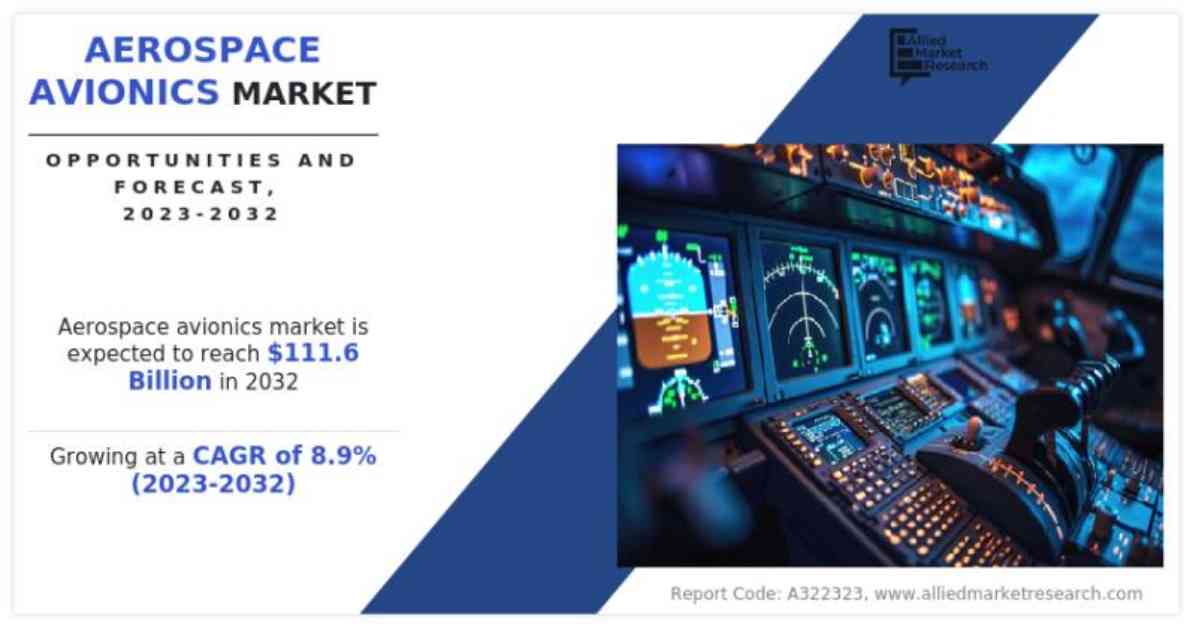The aerospace avionics market is experiencing significant growth, driven by the increasing demand for next-generation aircraft systems. According to a report by Allied Market Research, the global aerospace avionics market size was valued at $48.7 billion in 2022 and is projected to reach $111.6 billion by 2032, with a compound annual growth rate (CAGR) of 8.9% from 2023 to 2032.
Technological advancements are playing a crucial role in the evolution of avionics systems, leading to improvements in functionality, reliability, and performance. As new technologies such as advanced sensors, processors, and communication systems emerge, avionics manufacturers are continuously innovating to integrate these advancements into their products.
The rising demand for modern avionics is fueled by continuous technological advancements that offer enhanced functionality and reliability. Avionic systems encompass various components such as air data sensors, accelerometers, pilot control stick sensor assemblies, and rate gyros. The retrofit aircraft market is expanding, with aircraft modernization using state-of-the-art technology driving the adoption of avionics throughout the forecast period of 2022-2032.
Deployment of next-generation flight management systems and integration of advanced navigation and surveillance technologies are expected to further boost market growth. Factors such as increased demand for commercial aircraft deliveries and substantial government investments in grid infrastructure improvements are contributing to the significant growth of the aerospace avionics market share. Favorable government regulations and a growing trend of enhancing infrastructure at private airports are also driving market expansion.
Forecasts by the International Civil Aviation Organization (ICAO) suggest a doubling of both passenger and freight traffic by 2035, driven by factors such as the proliferation of low-cost airlines, rise in disposable income, and increase in population density, resulting in heightened commercial aircraft deliveries.
The surge in the adoption of modern avionics is driven by the growing need for aircraft enhancements to improve operational safety and fuel efficiency, thereby reducing operating expenses. Key hardware components such as communication and flight management systems play pivotal roles in ensuring safe and efficient flights. Flight management systems facilitate the seamless coordination of key aircraft elements throughout a flight, from take-off to landing, by pre-programming the aircraft’s travel route to ensure accuracy and punctuality.
A contemporary aircraft navigation system consists of various components, including magnetic field detectors, inertial navigation systems, and distance measuring devices. Navigational aids are essential for both air and ground navigation, as aircraft rely on information from equipment and other references for safe maneuvering.
Several domestic airlines are planning to expand their fleets, with China Southern Airlines aiming to increase its fleet size to 2,000 aircraft by 2035. The aerospace avionics market is segmented based on subsystem, platform, fit, end-use, and region, providing a comprehensive analysis of the industry landscape.
In conclusion, the aerospace avionics market is witnessing significant growth driven by the increasing demand for next-generation aircraft systems. Technological advancements, rising demand for modern avionics, and the deployment of advanced navigation and surveillance technologies are key factors contributing to market expansion. The future looks promising for the aerospace avionics industry as it continues to evolve to meet the growing needs of the aviation sector.
